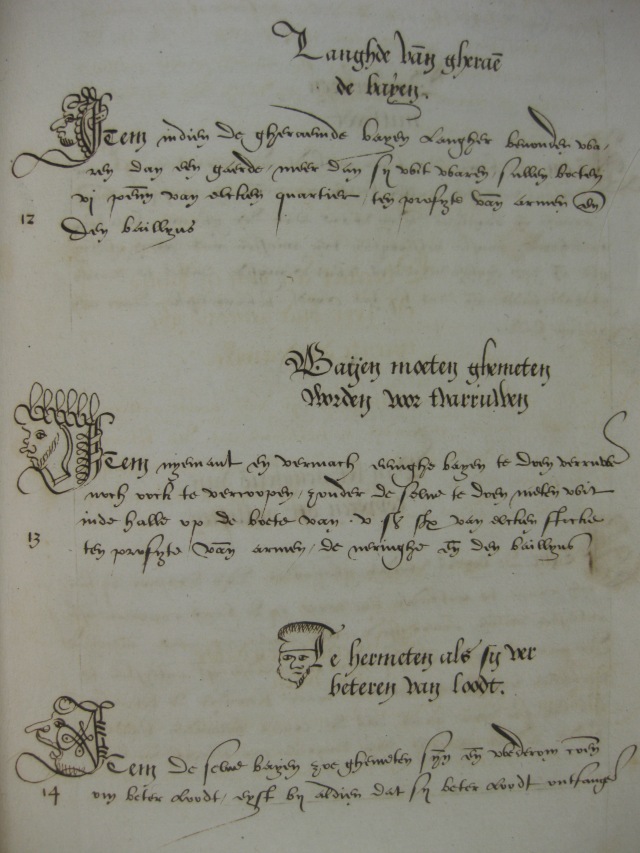This week is Refugee Week and an opportunity to celebrate Norwich’s long history of welcoming incomers to the city. This week’s blog post introduces us to the Strangers and has been written by Archivist, Frank Meeres. 
The word ‘Stranger’ was originally used in records to mean anyone who was not a native of a particular town – it occurs in Norwich leet court rolls of the later thirteenth century, where the people described as ‘strangers’ are from places like Thorpe, Hellesdon and Earlham – and therefore, legally, not within the jurisdiction of Norwich. Later the word came to be used for a particular group of incomers – refugees from the Low Countries from 1567 onward, who were fleeing from persecution in their own land, and who found a welcome in the city. Most of these people were Dutch speakers, but a considerable number were French speakers; the latter are known as Walloons. By the late 1570s, one person in four in Norwich was a refugee who had come into the city within the previous ten years.
The city welcomed these incomers, but kept a careful check on their numbers. In the time of Mayor Robert Wood (1569-70), it was noted; ‘by reason of the business in Flanders the city was very much replenished with strangers’. In November 1569, the number of strangers was calculated at 2,827 (752 men, 681 women, 26 servants, 1132 children), ‘all which company of strangers, we are to confess, do live in good quyet and order, and that they traveyle [work] diligentlye to earn their livings.’ In October 1571 the total number of Strangers was 3,993 (1,056 men, 1,095 women, 1,862 children). It was calculated that 355 people had arrived since 25 March 1571, made up of 85 Dutchmen, 25 Walloon men, 85 women and an unspecified number of children – and also one Frenchman from Dieppe. Another census of 1583 calculates that there were 4,677 ‘Strangers’ in the city. As there was a serious outbreak of plague in the city in 1579, in which the incomer community was particularly badly hit, there must have been well over 5,000, probably nearer 6,000, members of this refugee community before it struck – and this in a city with an English population of no more than 12,000.
Records in the archive
Many people have ‘Stranger’ ancestors and want to find out more about them. The best book to start with is still ‘The Walloons and their Church in Norwich at Norwich’ by W J C Moens, published in 1887-8. In spite of its title, the book lists Dutch incomers as well as Walloons. The book is very hard to find these days, but there is a copy on the open shelves in the Norfolk Record Office.
The Norfolk Record Office has many documents that Moen did not use which bring alive the Stranger communities in the city. For example, Mayor’s Court books contain records of apprenticeships, which show how English people gained skills through contact with the incomers. A Norfolk tailor, Richard Whitterel had two sons, who both became apprentices of incomers, one to be trained as a bay weaver the other as a pin maker. Indeed in 1581 the city authorities employed a Dutchman, Nicholas Beoscom, to teach pin making to their orphans housed in the Great Hospital. Girls benefited too – two female orphan sisters named Browne were found work in service with Dutchman in the city. Similar entries occur within the records of Norwich Quarter Sessions where, to take just one example, it is recorded that Thomas Bucke is assigned as apprentice to John Halfebers, alien, in 1573, to be taught the ‘mystery’ of lace weaving.

Enrolment of Apprenticeship Indentures, June 1585-Nov 1625. NRO catalogue number NCR Case 17d/2
Details of a new skill brought to the city by incomers are revealed in Mayor’s Court entries in 1590. Gyles Cambye, a Dutch immigrant dyer living in Norwich, told the court that he was trading with Arthur Rotye, another Dutch immigrant, who lived in London. Rotye was an expert in the use of green dyes, and Cambye wanted him to come to Norwich. Rotye did come, and he taught his skills to an English dyer in the city and his apprentices.
The Mayor’s Court dealt with petty offences in the city, and inevitably some incomers found themselves involved. Two minor criminal cases before the Mayor’s Court reveal the Dutch love of gardening. In 1582, three English men, probably boys as one was described as an apprentice, were whipped for breaking into the orchard owned by Giles Vanderbrook, alien, and stealing apples and pears. Eight years later, five Norwich men were charged with breaking into a close outside St Stephen’s Gates and stealing roots, the property of a Mr Vertngoose.
In June 1602, Willemyne Clyncket, the wife of James Demara, went to the leaders of the Dutch community to complain that her daughter had been badly bitten by a dog owned by Pyrma, widow of Francis van Dycke: Willemyne had called in a surgeon and the Dutch leaders decided that Pyrma would have to pay the surgeon’s fee of £3. However, because she ‘obstinately refused’ to pay, the matter came before the Mayor’s Court, which sent her to prison. All the people involved in the case were incomers; we are not told whether or not the dog was also from the Low Countries!
First generation immigrants are – sometimes at least – recorded as such in wills or letters of administration. There are 22 wills or letters of administration for people described as ‘Dutch’ between 1570 and 1610, with a further one in 1639; eleven more for people described as ‘alien’ or ‘stranger’ and six more for people described as ‘French’. From the beginning of the seventeenth century, the original wills sometimes survive, such as that of John Hovenagel, made 19 January 1603: he describes himself as: ‘Drapier; inhabitant and allient within the cittie of Nortwhich in the kingdom of Inglornd’. A later will of great interest is that of John or Johannes Elison, pastor of the Dutch church in Norwich, and best-known from the portraits that were painted by Rembrandt of him and his wife. He names his wife Mary and his son Theophilus (also later the pastor of the Dutch church in the city) as executors, and two other prominent members of the community, Francis Dacket and John Cruso, as supervisors.

Will register of Joos de Ram of Norwich, 1577. NRO: NCC will register Cawston 261.
As these examples demonstrate, there is an enormous amount of information about the community and its members to be gleaned from archives held in the Norfolk Record Office: further research would undoubtedly provide a great deal more fascinating detail as to the economic and social life of this refugee community in Norwich four centuries ago.














Reblogged this on Norfolk Notes and commented:
An excellent overview of the influx to Norwich of C17th ‘Dutch’ families who were escaping persecuton in the Low Countries.
LikeLike
Pingback: We made it! ⋆ Nine Notes
Pingback: Strangers’ Hall – James Lever Books
If any one can help I would be grateful,,, I believe my name origin is from a Mathei/ Mathew TRYANCE who arrived in Norwich / Norfolk in 1540 / he married in 1542 to Katherine, there is a record at St marys Old Hunstanton Norfolk…. Mathei may have had 2 sons Eustacius and William , also born in Old Hunstanton in 1549 and 1551.. Some has said that Mathew was a Blacksmith in the employ of Sir Thomas le Strange,, he was Also known as Mathew the Flemming…this is all I know, I have done 30 years of genealogy , and Originally thought I was a decendant Of Abraham Tryan born st ANDREWS Norwich 1565 , Son of Francis `TRIOEN ` born in Wulverghem Flanders Belgium 1542, but I am more inclined to believe that my lineage is from William Tryance above , son of Mathew, as the surname is closer to TRIANCE, without the suffix of `CE ` On `TRYAN` A possibility when names were anglacised… I would love to know the original spelling of the TRYANCE Flemmish name , then I could trace it more , it may Have been Trioen, Tryoen, ? but I can not find a birth for Mathew with either derivation being born in the Low Countries about 1520- 1522 ….But if anyone could point me in the right direction i would be most grateful… Thank you
LikeLike
Hello Mark, thanks for your comment. I’m sure if any members of the public can help you, they will be in touch. You may like to try contacting a local record searcher who can carry out specialised, targeted research on your behalf. There is a link on the Norfolk Record Office website with details – https://www.archives.norfolk.gov.uk/our-services/record-searchers
LikeLike
thank you
LikeLike